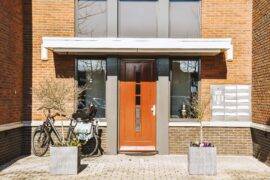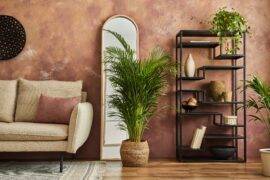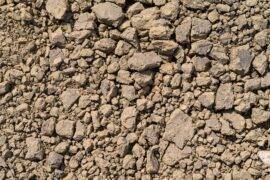Finding plants that tolerate the summer sun can be a tricky challenge, but what about plants that can tolerate the shade? Did you catch my post on choosing the best indoor plants for your interior earlier this spring? Kate here, and today I’m shifting the focus to the exterior of your home. Below you will find some of the best outdoor plants for shaded areas such as porches, patios and below-tree patches. I have experience successfully growing all but one of the featured selections below, so I can honestly vouch for their reliability. In other words, these are some hardy plants, folks! Let’s get started…
Mondo Grass
Some call it a staple of the contemporary garden. With its dark, long leaves and modern silhouette, this sturdy plant is often used as a ground cover for shady areas, as shown below. Also called monkey grass, mondo grass grows in mounds, creating texture in your yard or garden. [from David Morello Garden Enterprises]
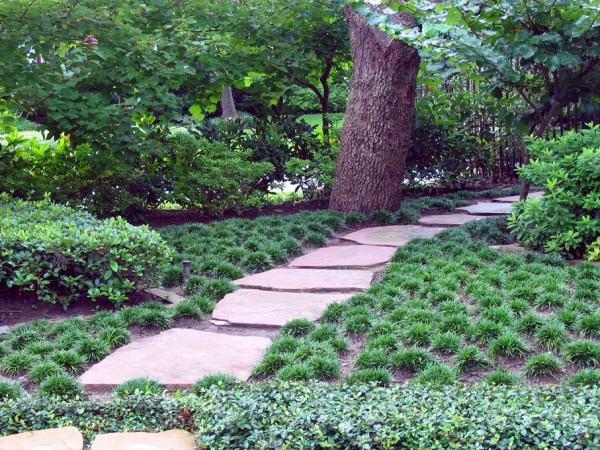
The dwarf varieties of mondo grass can also be used to add interest to a cluster or path of stepping stones. Simply fill in the cracks and watch this plant flourish! [from PlantWerkz]
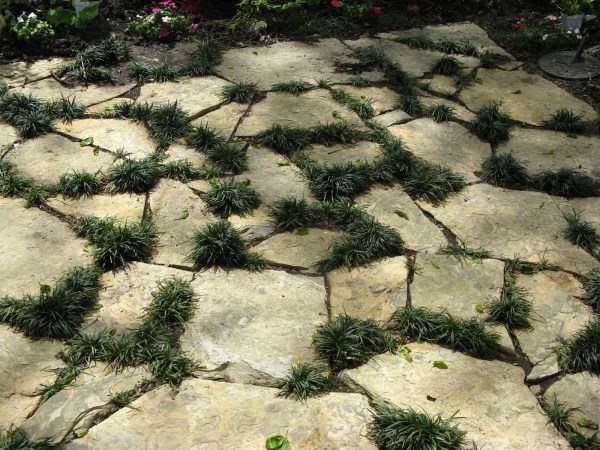
Mondo grass is drought tolerant and requires no mowing. However, it doesn’t spread quickly, so if you want a lush look (as shown below), you will need to plant these grasses close together. [from PlantWerkz]
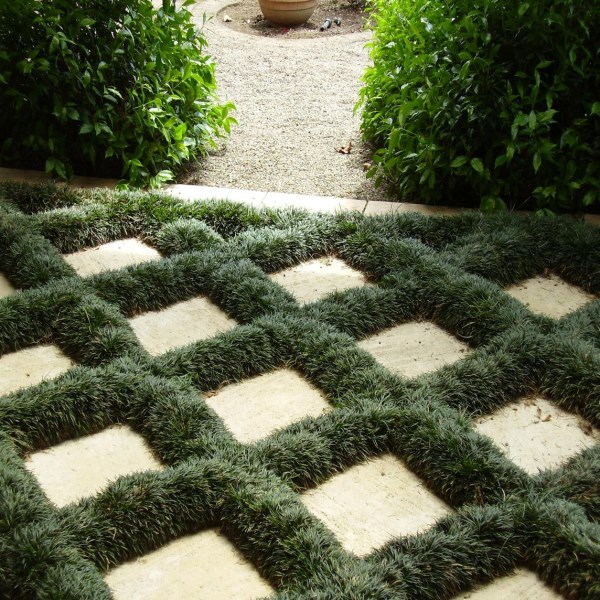
Think mondo grass is just for the ground? Try again! It can also be cultivated in containers, especially if you don’t over water it. Remember the cinder block bench I created in this post? I used mondo grass to fill the built-in cinder block planter. While technically this plant can handle the sun, it really seems to prefer the shade, at least in my hot and humid neck of the woods. A case in point: the mondo grass on the sunny side of my patio did not survive! Below we see black mondo grass and Scotch moss in a modern container. [from Westover Landscape Design (on Flickr) via Pinterest]

Creeping Jenny
Creeping Jenny is one of those fabulous plants that does well in sun or shade! This ground cover grows quickly and produces lovely olive green leaves that will enhance your outdoor space. [from Outside Landscape Group, LLC]
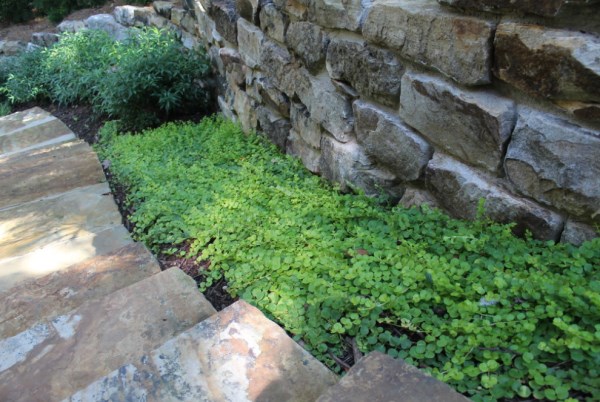
As with the mondo grass, this plant makes a great filler for the space between stepping stones. The vibrant dash of green adds much-needed contrast to gray and beige gravel and stones. [from Ravenscourt Landscaping & Design LLC]
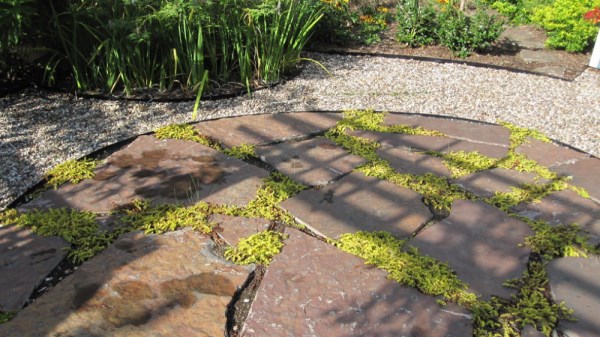
Did you know that creeping jenny cascades? Beautifully! Use it to add interest to urns or other containers on your porch or patio. [from Maria Denardo Landscape Design]

One of the few survivors of the hot summers and cold winters where I live–my creeping jenny. I bring in all of my potted plants when it freezes, but somehow a few of them don’t always make it to the end of the season. Yet the hardy creeping jenny is still growing strong. If you have a shady, sunny or patchy area on your patio, this plant is the perfect solution. In fact, because of its ability to thrive, you may be tempted to neglect it. But don’t forget to water it, OK? [from Cathy Rosenhaus Garden Designs]

Snake Plant
What if you want to add some height and drama to your shaded space? That’s what the snake plant is for! A popular choice for modern homes, this structurally interesting plant can handle low-light situations, as well as sunny conditions if the weather doesn’t get too hot. [from Ketchum Photography for H3K Design]
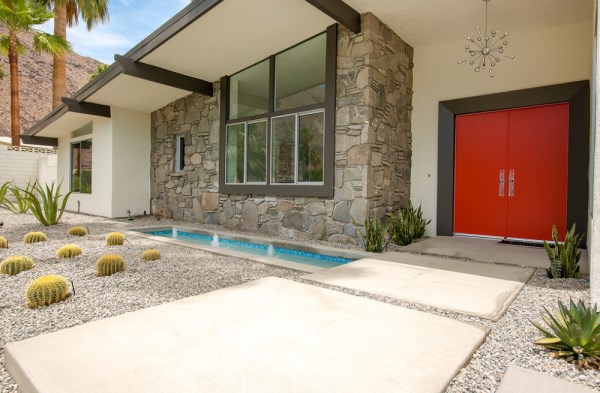
You’ve probably seen the snake plant (also called mother-in-law’s tongue) in commercial interiors, such as bank and hotel lobbies. It also makes a great houseplant. But you can definitely enjoy it outdoors. As shown below, the snake plant is perfect for adding height to borders. [from Life Outside]

And since it does well in the shade, it’s ideal for planters and containers against the exterior of your home, even if they’re covered by the roof. [from Cultivart Landscape Design]
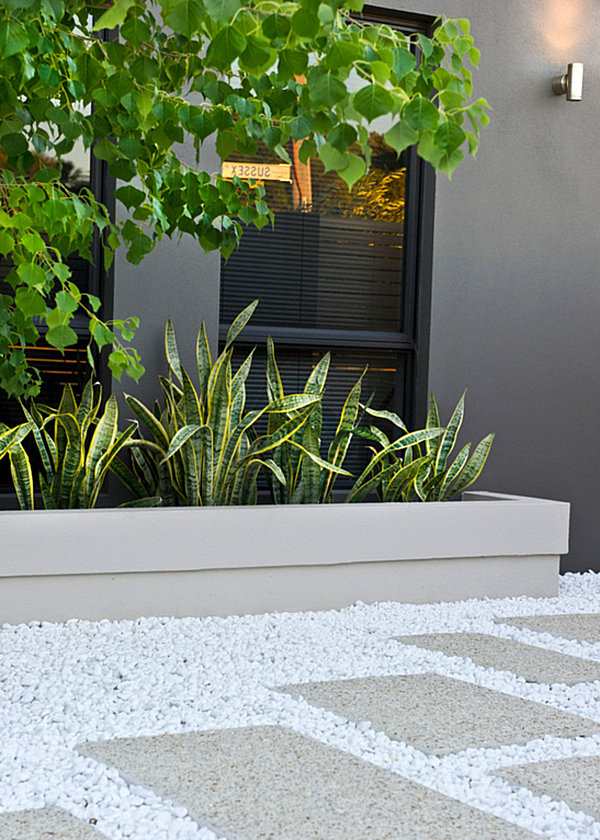
The snake plant is the one selection featured today that I have not yet grown at home. But it’s my plant of choice for the patio, and I will be purchasing a few of them this weekend. A couple of important points: do not overwater this plant. Allow it to dry out between soakings. Also, the snake plant loves the warm weather. If the temperature dips below 40 degrees, it’s best to bring this plant inside. [photo by Peter Brennan for Ecodesign]
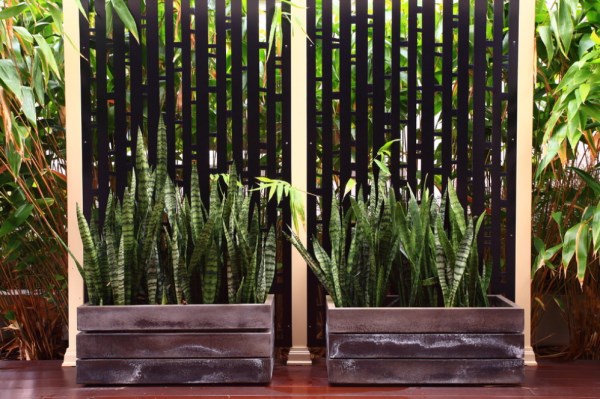
Boston Fern
Boston fern is the first houseplant my hubby and I purchased for our home as newlyweds! Now that very plant is on our patio in the perfect low-shade spot. You’ve likely seen Boston ferns hanging from front porches–these plants are extremely popular for hanging containers! [photo by Shelly Hoffman, from Stephanie Wilson Interiors]
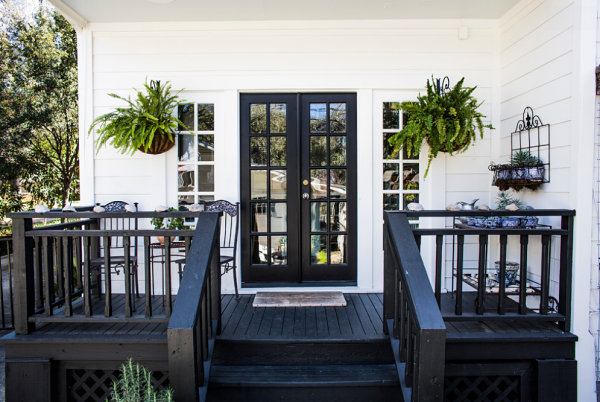
They are also ideal for lining the steps that lead up to your door, as shown below. [photo by Allen Russ from Hoachlander Davis Photography, LLC , from Barnes Vanze Architects, Inc.]
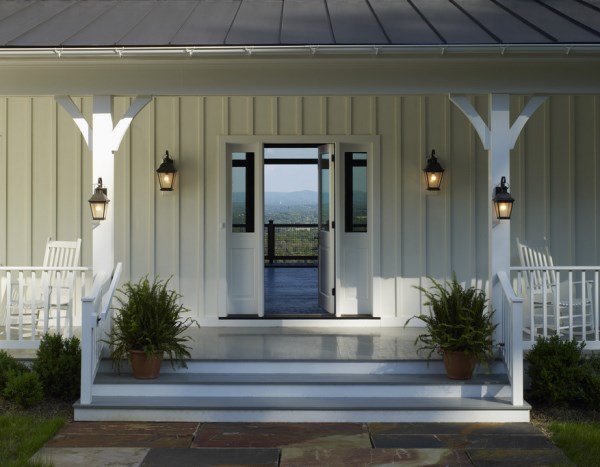
Boston ferns are striking border plants, lending a lush, full look to the spaces they inhabit. As mentioned, they thrive in low-light situations, but they also need moisture. Providing them with plenty of water is key, but make sure you do not water these plants excessively. [from Bella’s Nursery]
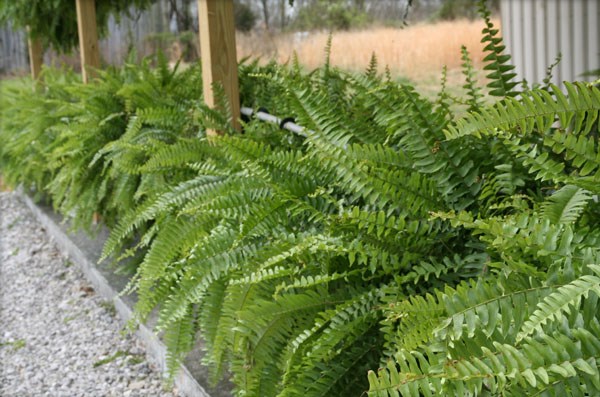
Boston ferns tend to cascade over their containers, creating a distinct form that gives them a strong presence. I enjoy displaying mine on a plant stand, as the full foliage is an interesting contrast to the slender shape of the stand! [Walter Knorr Florist Commercial Service]
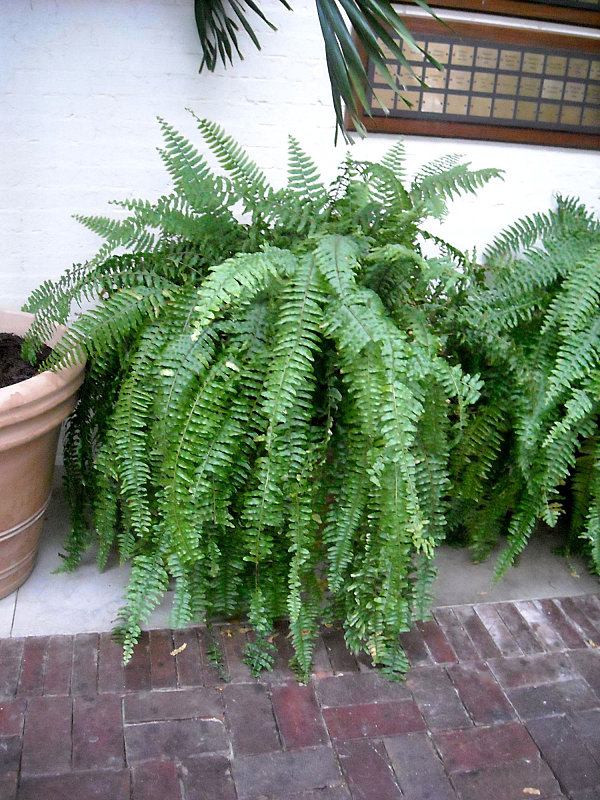
Assorted Succulents
Last but not least, we feature succulents, particularly the small alien-looking varieties that are often grown in modern planters. Yes, succulents love the sun. But they can also thrive on patios and porches if these areas aren’t too dark. Aim for bright shade! I love creating plantscapes with interesting succulent selections, but I’ve yet to cultivate a vignette as elaborate as the one below. [from GardenForeplay]
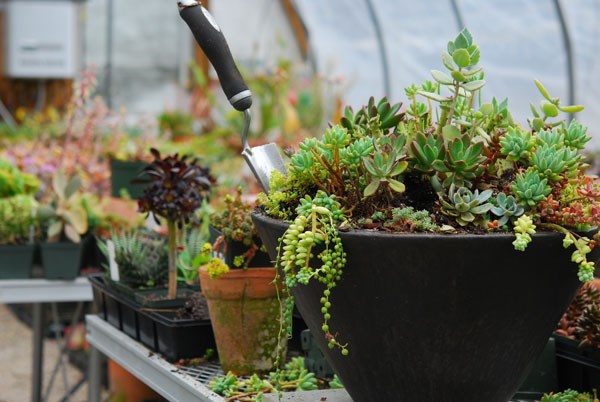
Everyone always talks about how low-maintenance these plants are, and how impossible it is to kill them. I’m going to be honest, folks–this has not been my experience with succulents. Quite a few have perished under my care, despite my attempts not to over or under water them! But with that said, I currently have three containers of succulents in my garden that have somehow survived. I love them, and I won’t quit. Persistence is key. Eventually you’ll find the right combination of light, water and soil! [from navajoblackJADE]
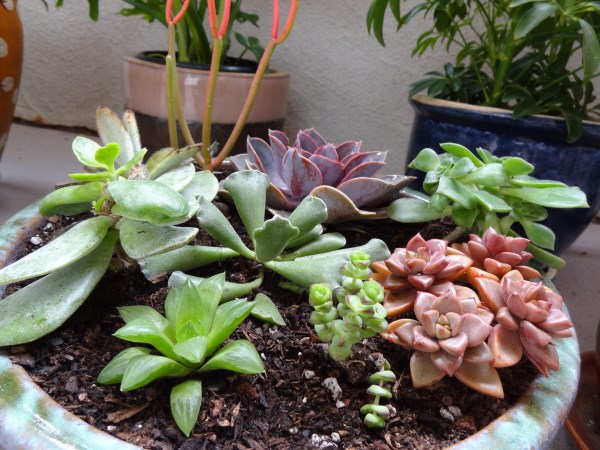
My personal trials aside, it’s clear that succulents are ideal for modern spaces, including shady ones. One more helpful tip: it’s very important to let the soil dry out between waterings. Soggy succulents are unhappy succulents. [from Jeffrey Gordon Smith Landscape Architecture]
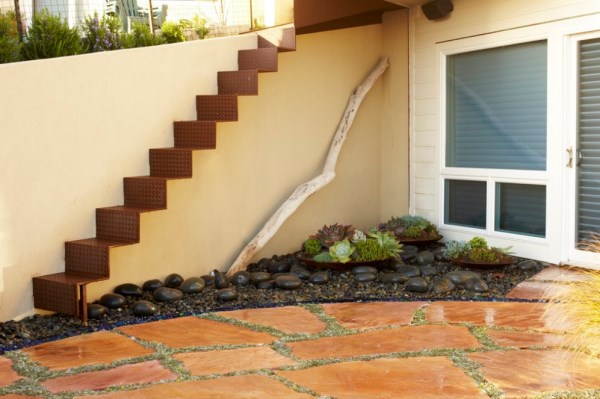
Plant your succulents in the ground, or cultivate them in containers. I would recommend trying them out in a container first–in the exact area where you intend to plant a slew of them. If the plant is less than happy, try moving it to a different spot. Check with an expert at your local nursery for succulent varieties that do best in the shade, and then go for it! There’s nothing like a gorgeous cluster of succulents on a modern patio! [from Debora Carl Landscape Design]
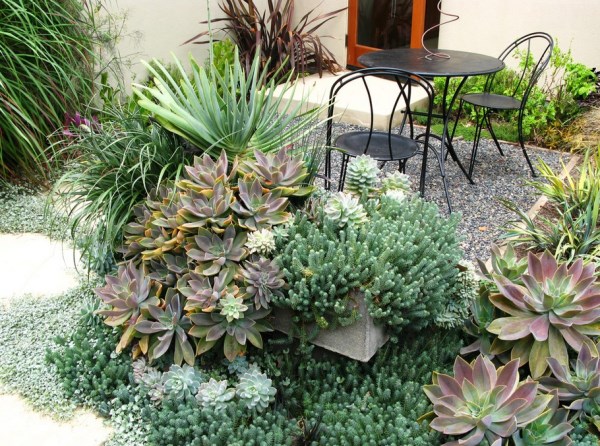
If you live in an area where squirrels are abundant, note that these creatures might be tempted to eat your succulents. Be prepared to move them to a less accessible spot if necessary. And speaking of creatures, if you have pets, do a little bit of research to ensure that your outdoor plant of choice is safe for pets (and kids). Yes, plants can be toxic to living things if ingested. But with a little planning, you can find just the right selection to fit your needs–and jazz up your space!






